|
"Productivity is never an accident. It is always the result of a commitment to excellence, intelligent planning, and focused effort." - Attributed to Paul J. Meyer What are you planning for at the moment?
As I write this, it is early January 2018, and like many I am trying to get some planning done and set myself up for a good year. As with many who write blogs or record podcasts, I am trying to build in some buffer-space, some articles that can be scheduled to appear at set times; while I have time during the holiday period when Miss One is napping during the middle of the day. This includes recording a number of FTPL videos that have been uploaded and are ready to be scheduled into articles. It has been an incredibly productive period, having written several articles, recorded nearly a dozen FTPL videos, and completed the Flipped Learning Level II Certification course and there is still time before the students return to school to get some more done. I have also been thinking about how I want to plan my year out vis-a-vis travel to regional areas in order to be more strategic and proactive than I feel I was last year, and thus far, have had some good conversations about my thoughts on that with Mrs C21, as well the person in the ClickView office with whom I work most closely and frequently. It will hopefully make things easier, more structured, and less reactive - always a good thing! I hope your summer break has been restful and if you have been aiming to be productive in some way, domestically or professionally, that you have also been able to achieve that.
0 Comments
“Make feedback normal. Not a performance review.” – Ed Batista In NSW classrooms, it is mandatory the Public Schol system, for teachers to have a Performance Development Plan each year to set goals and work towards achieving them to develop your practice.This is osensibly a good idea in cocept, however, the reality is that they are often treated as a compliance tool that must be completed rather than an opportunity for genuine growth and development. Part of the process is to have your lessons observed and feedback provided. Thispractice is fraught with issues, not least of which is that the moment another teacher enters the room, unless having other teachers in the room is the norm, the dynamic will be changed and the lesson observation and therefore the feedback is, is no longer based authentic as it is not based on the norm and is instead based on a changed lesson as the students will change their behaviour and we as teachers do change our practice someone else is there. In a conference setting, however, it is the norma to have a room full of people that you do not necessarily know well interspersed with people you do know well, and also for conference organiser to come in, taking photos and observing the session before leaving again. So when Matt Burns, a brilliant Primary educator joined in my workshop on flipping the unit at FlipConAus, there were a few nerves. Matt is someone who knowledge and opinion I trust and respect and for me, it felt the same as if my lesson was being observed by my Stage Supervisor. However, it was also somewhat of a relief as it meant there was someone in the room whom I knew, whose opinion I trusted and respected, who was further along their journey and more developed with their flipped pedagogy than I, and who I knew that any feedback offered or given would genuinely come from a place of wanting to help grow and develop my own practice. It also meant that Matt effectively became just a part of the workshop. I am very conscious of the fact that I am an early career teacher and so do not have authority vis-a-vis talking with fifteen or more years behind me is not something that I can do at this point and I asked Matt, after the workshop and the others had left, for his feedback. I know that receiving feedback, particularly constructive feedback can be a shock to the ego and quite challenging but I am aware that for me, it is what I need to grow and when an opportunity like this was presented I was not itnending to let it go. Feedback was provided and taken on baord, however, the feedback in one area really opened my eyes and changed my approach to planning. The flipped unit planning tempalte that I had developed was based on the planning process that I had gone through in the past with colleageus in developing units of work; I had not seen a different approach in my conversations with any one. Matt felt that it was almost there, starting with the learning goal and what would be assessed. What Matt showed me through our conversation and his diagram on the board was that the template needed a small tweak. The template was never, in my view, intended to be a super detailed every lesson mapped out planning tool. It was designed to be a broad brushstrokes, get the skeleton or framework down so that the detail can be hung from it afterwards. So the structure of the template was to have the learning outcomes first, followed by the outlines of the assessments, and then the breakdown od the skills and/or concepts that needed to be learned throughout the unit, and reflection at the end of the unit. What I was missing was the rubric. When Matt said that he felt it should have the rubric included beforethe teaching and learning seqeuence overview I have to admit that I could not see why it was needed, that was more detail than I felt the planning document needed. Matt's point though was that if you knewwhat the syllabus outcome and learning goal was and you knew the what would be assessed and in what manner, then develeoping the marking rubric and making those decisions about what was important to you and what level of demonstration would achieve whatmark, then the rubric would effectively write the teaching and learning sequence. This process may be old hat to some of you, but for me it was a revelation. I always felt there was something missing in how I had been shown to develop units or work; but I did not know enough to determine what it was, beyond knowing that I needed to decide what my actual learning outcome was. The process I had been shown and knew was to grab the scope and sequence to check what topic we were doing, plan out the teaching and learning sequence and then write the assessment task and rubric.
I wanted to preface all of that by actually determining the outcome and learning goal that I was trying to achieve. To do otherwise seemed like trying to navigate with a map or compass. I also knew that I wanted to have the assessment tasks known up front as this would ensure that as I developing the teaching and learnign sequence, I could ensure that I had hit each of the things that I had determined I wanted my students to be able to demonstrate in order to know they had achieved the learning goal. Matt's position, which I have come around to, was that by developing the rubric for the assessments, you would know know not only the learning goal, what was being assessed and how (macro), but also what, within the assessment, were more or less important than other parts of the assessment. I.e. I have seen (and written) so many rubrics where there is a criteria to do with spelling and grammar etc. The level of importance you assign to that in an essay or other writing task is likely to be different than the importance assigned to the same criteria in a maths task. Once you know what is being assessed and how at the micro level, that then effectively writes the teaching and learning sequence as those are the things that need to be taught and so they must be included in the sequence. This approach actually makes, in my opinion, the process of developing a unit of learning easier and more straightforward. I have modified the unit planning template to reflect Matt's feedback and it can be downloaded here. As always, it is licensed under creative commons, so feel free to modify and share as needed. If you do make changes though, I would love to see the changes you have made, purely from a curiosity and are they changes that I should be making to the document myself. Thank you to Matt for his time and feedback; and thank you for reading. “Literacy is a bridge from misery to hope. It is a tool for daily life in modern society. It is a bulwark against poverty, and a building block of development, an essential complement to investments in roads, dams, clinics, and factories. Literacy is a platform for democratization, and a vehicle for the promotion of cultural and national identity. Especially for girls and women, it is an agent of family health and nutrition. For everyone, everywhere, literacy is, along with education in general, a basic human right…. Literacy is, finally, the road to human progress and the means through which every man, woman, and child can realize his or her full potential.” ― Attributed to Kofi Annan How do you structure your morning literacy block with your students? How do you choose your texts for guided reading, independent reading, and how do you choose the tasks to be completed by students while you are reading with the other groups? Mrs. W. and I are going through a process of refinement as we work to find the balance between structure and student choice, between finding texts that are interesting and engaging, yet also have a purpose behind their selection, and tasks for our Must Do / Can Do list that engage whilst also serving the educational purpose that we want. as a side-note, as you read, be aware that I am writing this on Monday afternoon, and thus any references to yesterday, today or tomorrow are made within that context. At this point, the literacy block on my days looks something like this:
We are finding mixed standards across our class, both in regards to the quality and the quantity of what is being completed and handed in, and thus far, we have worked on finding a structure for the morning that provides independence to students to carry on with their tasks without needing our guidance every step of the way. Initially, we provided a list of the tasks that must be completed and those that are then able to be worked through afterwards, whilst we were with the guided reading group. This seemed to be too much independence, at this point in the year, as we found we were constantly having to answer questions from students about what they needed to do next, what they could do when they were finished etc. and it was completely ruining the flow of what we were looking to achieve with the reading group. Following this, I had students decide in advance the order they were going to complete tasks in, thinking that having a plan of attack would allow them to focus on completing the tasks, give them confidence that they knew what they were doing, and allow me to focus on my reading group. This also failed, as some students spent far too long vacillating about the order in which they wished to complete tasks. Last Wednesday I tried a different scenario and it worked very well, with students on task, engaged, and asking each other questions rather than disturb the reading group I was with. Today, I thought that I would use the same structure, given that it worked well last week, and discovered something that veteran teachers probably are well aware of: Last week I structured reading groups loosely akin to reading groups that you would find in an infants classroom (indeed, they were very similar to how reading groups were structured in the Year One class in which I completed one of my professional experience placements). I put on the board the order in which I would see the reading groups, and the tasks that the other groups were to complete whilst I was with each group. I suspect that it failed today, whereas it worked last week, as today I attached group names to specific tasks, indicating what I wanted them to start on first.
This cause issues as some of the tasks required less time than I was with a reading group, and those students were left, apparently, floundering, not knowing what to do, and unable it seems to take the initiative to move on to the next tasks on the board. Having thought about it this afternoon, I know how I will structure things tomorrow to hopefully resolve that issue. Tomorrow, when I indicate to students to move into reading groups, I will put on the screen the exact tasks and the order in which they are to be completed. In between each group, I will take a few minutes to quickly circulate and check students’ progress through the tasks (something I did not do today, which I think compounded the issue), signing off on each student so that I can track how they are progressing through the tasks, knowing that I am spending approximately ten minutes with each reading group. This will also help me gauge the appropriateness of the tasks they are being asked today in a certain time frame. I feel, upon reflection on the term thus far, that I was so frustrated by lost time early in the year due to a variety of factors (some of which I wrote about here) that I forgot to spend time bedding down good structures and process in the class in an effort to catch up to where I needed to be according to the scope and sequence documents, and am now paying the price, with structures still somewhat loose which is having repercussions in regards to what we are achieving. I would very much like to hear how you structure your literacy block and reading groups, so please, leave a comment either here or on Twitter, and as always, thank you for reading. I am unlikely to post an article tomorrow (Wednesday) as I will be attending the FutureSchools expo and conference. If you are going, let me know. It would be great to catch up with some Tweeps. If you have not heard of FutureSchools before or are unable to make it this year, you can find the review articles I wrote from FutureSchools 2015 by clicking here. This year’s reviews will appear over the week or two post-FutureSchools. “Obstacles don’t have to stop you. If you run into a wall, don’t turn around and give up. Figure out how to climb it, go through it, or work around it.” – Attributed to Michael Jordan Recently I have been writing about the struggles, the frustration and the challenges that I have encountered to this point in the school year. Yesterday, however, I wrote, very briefly, that something had changed, and that I was feeling much more positively about things. I was unable to expand on what I felt that was as I had to go to a referee fitness test in Newcastle. The good news on that front is that I hit the goal I had set for myself for the test in order to be eligible to be appointed to a particular level of match during the season. I made the decision on Sunday, after having a stress attack, that I would go to bed, get up early and get started with a clear mind. Accordingly, I was in my classroom at 0600, and I found it to be an incredibly productive two and a half hours until the bell rang for the start of class. I began that day with a better idea of what I needed to achieve in my teaching, which meant that my teaching was clearer and more concise, with less waffle. I made the decision to be at school nice and early, again, for Tuesday morning, and began teaching on Tuesday with a very clear vision of what I wanted to achieve, how I would achieve it and what I could afford to drop if there were time constraints or unexpected interruptions. Today, I was again in my room at 0600 preparing for the day ahead I feel like I have turned a corner. The key, rather obviously, is my planning. I have a very clear idea of what I want to get done today, what I can afford to drop if there are time issues, and what the learning goal is for each session., and it is showing, both in my teaching and in the way the students are behaving and engaging with the tasks they have been asked to complete. Last year, as I mentioned in a previous article, I was tasked with teaching digital literacy skills; skills that I could utilise standing on my head whilst asleep. Having been thinking about it, I believe that I allowed some bad habits to creep into my planning. Whilst I had a program that I had put together, I was rarely looking at it, making decisions about next learning steps based upon what I felt made sense from where the cohort was, how they had coped with learning a particular skill or piece of knowledge, and what fitted around the multitude of interruptions that we were experiencing in the school. This is not the way to teach. I was utilising the seven-step planning process (that is, planning what you would be doing in the seven steps before you reach the class door) more regularly then I care to admit, and I allowed those poor habits to carry over to this year, in conjunction with struggling to wrap my head around all of the extra responsibilities and tasks that go hand-in-hand with having a class. A colleague who habitually arrives at school early each day commented to me this morning that they had noticed I had been in early the last few mornings, and when I replied with how productive I had been finding it, they gave me a knowing grin, and replied that when there is no one else here, there is no onto distract you but yourself, and that having a clear plan can create incredibly productive mornings.
The key, I believe, is that my planning has been more focused. Rather than focusing on what I want to achieve, I am also allowing myself to consider how I will achieve that, how I will check for understanding, what aspects I can afford to drop if we run out of time, or there are interruptions and also what resources I need to achieve the goal. Today was, for the year so far, the most productive day that I believe I and my students have had, and that was with losing essentially the whole middle session to scripture. Tomorrow is my day off, however, I will be back in here at 0600 tomorrow morning as it is school photo day and if I need to be in here (I do not, of course, but I want to be here for my first school photos with a class of my own), then I may as well make it a productive day. As always, thank you for reading, and I hope that your day has been as productive and left you with the same sense of achievement as mine has. “The thing I loved the most – and still love the most about teaching – is that you can connect with an individual or a group, and see that individual or group exceed their limits.” – Attributed to Mike Krzyzewski I thoroughly enjoyed the role that I had last year as an RFF teacher focused on teaching digital literacies. It afforded me the opportunity to experience a wide range of students, to try pedagogical strategies with different class groups to see what worked, and on occasion, what most definitely did not work, and to get a greater feel for what kind of teacher I want to be, without the pressures of being a permanent teacher on a single class and the associated additional responsibilities that are attached to that role such as the extra administration, reports (though I had to complete reports, it was significantly less stressful and time-consuming than my colleagues), PLAN data, parent communication etc.
This year, as mentioned in my previous article, I am job-sharing with a more experienced colleague on a Year Five class, and while I am feeling more nervous about teaching a single class and having those additional responsibilities, I am also more excited than I was last year. In particular, I am excited about the sentiment expressed in the opening quote. I saw growth in many of my students last year, and formed some strong working relationships with various students, however, I found it difficult jumping from class to class, or even Stage to Stage and regularly not being able to continue with a particular lesson that the class was thoroughly engaged with and where deep learning was occurring because my timetable required me to move on to the next class. This year, whilst there is a timetable that needs to be adhered to, learning milestones that need to be hit and external factors that need to be allowed for, I will have the opportunity to really connect with my students and see them day-to-day, rather than once a week, and see learning opportunities through to completion and experience the growth across the year that students will undergo. I met with my teaching partner, Mrs. W, a few times throughout January to get some planning and programming completed, to determine the mechanics of how the classroom would function, management strategies, division of labour across particular Key Learning Areas etc. and I was pleasantly surprised to discover that, largely, we were on the same page to begin with. Mrs. W had some fantastic ideas that she wanted to implement and she was accepting of many of my ideas. This start makes me believe that we will be able to successfully work together during the year, as long as we continue to communicate. I have never worked in a job-sharing arrangement in any of my previous occupations, though I know many who have, and have heard both horror and success stories. I am encouraged that my school has a strong history of successful job-sharing partnerships in recent years. The year ahead promises to be exciting, and Mrs. W and I have had lots of conversations about various programs we want to put in place including both literacy and numeracy, and classroom management. Have you taught in a job-share arrangement before? What strategies made it successful or unsuccessful? Let me know in the comments. “I hope that in this year to come, you make mistakes. Because if you are making mistakes, then you are making new things, trying new things, learning, living, pushing yourself, changing yourself, changing your world. You’re doing things you’ve never done before, and more importantly, you’re doing something.” – Attributed to Neil Gaiman Welcome back to a new year! I hope that the Christmas and New Year break was relaxing and you have returned refreshed and ready to start with your new class. Personally, I am looking forward to an exciting and eventful year, and will be achieving some goals and going a long way towards achieving others. What are your goals for the year? Have you set any?
As my regular readers may recall, I have been offered a year-long temporary contract for three days per week on a Year Five class with a more experienced teacher which I am excited for. I am hoping to utilise this year to complete my accreditation to move into the proficient bracket, as well as to expand my skills and abilities. I am attending FutureSchools again this year and am also hoping to attend FlipConAus in Adelaide in November. I will once again write up a series of review articles based on my notes from the conferences. I am also attending a THRASS Foundation Course in the April holidays, which I am looking forward to. I plan to continue with this blog, posting an article each day, Monday to Thursday, however, that may scale back to only Monday to Wednesday, depending on time management needs as I have a lot going on, as we all do, outside of education. I am in the process of an upgrade certification as a Football (soccer) Referee, which when completed will see me refereeing in the third tier of football in Australia, National Premier League Division Two, and this goal will require a considerable amount of time and energy for training and matches. My biggest goal for the year, however, is to manage my time more effectively. I have decided that in regards to working outside of school hours, I will, where possible and practical, only work while Mrs. C21st is at work, and I will not be working outside of school hours on Thursdays or Fridays unless absolutely necessary (such as during report season and the beginning few weeks of the school year where there is still a significant amount of planning and programming going on). I feel like this is going to be crucial to not burning out this year, given the time, physical and mental demands that I will be under with everything that is happening. I will also allow me time to complete any marking, planning, blog writing, Tweeting etc, but also provides me with time off (Thursday and Friday, though I will be looking to undertake some casual work on these days). Thank you for reading, and I would love to hear, either in the comments or over on Twitter, what your goals are for the year. “Once you’re halfway home, you know that you can probably get the rest of the way there. -Attributed to Janis Ian Today is Wednesday of Week Five which means we are halfway through the current term, and that many teachers are silently cheering that they are now on the homeward stretch. There is no small amount of tiredness and fatigue this term, as many teachers find themselves staggering under the burdens laid upon them by all of the additional extras that are currently the expected norm in the teaching profession. The after school meetings, the various clubs and groups that run during lunchtimes, the various intra- and inter-school competitions all take valuable time from a teacher’s day and add varying levels of stress and work to a teacher’s already busy and crowded timetable.
Personally, I am find myself alternating between incredibly tired and worn out and strongly motivated and energetic. On the one hand I am really happy with the progress that some of my students have made this term, particularly in infants, where we have been focusing on some fundamental computer skills, particularly typing skills. The self-efficacy that various students are showing now when compared to the beginning of term two, or even the beginning of term three, is vastly improved. In stark contrast with that, I feel like, in many ways, I am taking two steps backwards for every one I take forwards. I feel like I have not achieved anything this term, and this is backed up when I look at my program. However, I have spent a significant amount of time working on some fundamental computer skills which I identified as lacking in my primary students, and have needed to devote a significant amount of time to working on those skills, as they are part of the foundation of digital literacy. In that frame of mind, I feel like it has been a valuable investment in time for the long-term result, which I likely will not see, particularly for my Stage Three students. it is a reminder of the oft-quoted remark by German military strategist Helmuth von Moltke, which is that “No battle plan survives contact with the enemy” which can be converted, I believe, into “no teacher’s program survives the term unchanged.” There are also a large number of interruptions in the coming weeks, with Book Week (which I do in fact enjoy and have already organised my costume for the book parade), the zone athletics carnival, Infants athletics carnival, Father’s Day stalls, and the swim program for Year Two and Three students which spreads across two weeks. Looking at what is left to cover in my program this term and comparing that to the amount of teaching time I will have access to with the various interruptions, I do not think that I can complete my program for this term without sacrificing the attainment of conceptual understanding and deep learning by my students, a compromise I do not want to make. This program was also my first, and I was aware going into it that I was perhaps biting off more than I could chew in regards to what I set out to achieve. I do need to sit down and update my program with the various changes that I have made, and notes of what did and did not work in various portions of the program. I would very much like to hear how you manage your program and keep it up to date with what changes and modifications you have had to make, both impromptu and planned. “dum loquimur, fugerit invida aetas: carpe diem, quam minimum credula postero.” Translation: “While we speak, envious time will have {already} fled: seize the day, trusting as little as possible in the next day.” -The Horatian Odes 1.11 I would like to think that I have managed to impress my readers that I enjoyed and valued my time at the FutureSchools expo, ClassTech conference stream and the Masterclass with Jon Bergmann. I also was able to spend some time wandering around the exhibitors stalls, chatting with a few, and networking with other educators from around the country. Whilst chatting with an e-learning Leader from Melbourne and an Assistant Principal from Brisbane, I received a text message from a Deputy Principal at one of the schools at which I do casual/supply/relief teaching (I discovered during conversations at FutureSchools that the term ‘casual teacher’ is not universally used) with an offer for a temporary block at their school for term two. I would be acting as a teacher-librarian, and the role would be four days a week for the full term, with the remit to teach computer and research-skills as appropriate for the various age groups from K-6 within the school. Naturally, I said yes, and have since spent much of my time plotting through what I want to achieve, how I can implement some of my learnings from FutureSchools to this block and how to go about setting the students up to achieve the skills and conceptual understanding I want for them, and also to be able to transfer those skills and concepts to other disciplines. I very much will be working to incorporate flipping, whether it be in-flipping or out-flipping, as well as leveraging student interests such as Minecraft, and trying to shift the locus of control to my students, away from myself, as recommended by Gary Stager when he said during his closing presentation for the ClassTech conference, “Every time you have to engage in an educational transaction, ask if there is more they can do and less you can do to give your students more agency.” It is a rather exciting time, and at the moment I feel a little bit like this guy: So it is time to switch off the modem, and take my own advice and start Planning for Learning so that I can provide a draft of my program to my supervisor for feedback asap.
I think the hardest part is going to be remembering all of my students’ names when I only have the classes once or twice a week. Wish me luck! “Minecraft is not a game, it’s a toy.” – Bron Stuckey My alarm went off at 5.30am Tuesday morning, and I rolled out of bed, ready for the ninety minute train ride back down to the Australian Technology Park in Sydney. The structure of day two was slightly different. Session one was the same, with two presentations followed by a morning tea break. The session between morning tea and lunch, however, would consist of all the conference streams coming out from their conferences and taking part in a series of roundtables. Delegates had seventeen different roundtables to choose from, across three different thirty minutes slots. The round tables were followed by the lunch break, which led into session three consisting of two more presentations, the afternoon tea break, and then the final presentation of the conference. After a welcome back for day from chairperson Sue Waters, the day began with the keynote presentation by Bron Stuckey titled Game Inspired Learning – how it offers us a chance to change the paradigm. Game inspired learning is a concept that I have heard discussed, under the banner of ‘gamification’ and I was curious to hear what it was all about, in more depth and from someone who has put the concept into practice. Bron was very quick to break Game Infusions Learning down into three areas; game design, game-based and game inspired learning and to discuss the subtle difference between the three areas. Bron listed two distinct points for each of the types of game infusion learning. Game design is about engagement through design, wherein students are involved in designing games as part of the curriculum. Game based learning is about engagement through game play, where games are brought into the curriculum. Game inspired learning, often termed gamification is about engagement that is guided by elements of, or as Bron termed them, ‘atoms’ of gaming being brought into the learning structures, where a gameful approach to the curriculum is mapped out. Bron provided some examples of applying ‘game atoms’ (game-inspired learning) to non-game situations, which you can see below. Bron also provided some examples of Game based learning, where game attributes are brought into the curriculum. Two of the examples Bron mentioned were Murder Under the Microscope and Atlantis Remixed, both of which feature a variety of game attributes (including narratives, avatars, levelling, economy, cascading information, feedback, prizes/badges/points, virtual goods, friending) and are game inspired ways of learning curriculum concepts and skills. There were a number of other game inspired platforms mentioned, including Duolingo, Race to the White House, Undergrad Life run by the Rochester Institute of Technology, and a degree that has been structured using game-inspired principles run by Concordia university, as well as a game-inspired professional development platform and 3D GameLab. Bron also stressed that being game-inspired is not necessarily synonymous with being digital. If game attributes are applied to a learning context, then it does not matter whether it is being done in the digital environment, or in the real environment. Bron then moved onto the question that I suspect most people were wanting the answer, or at least some insight, to; how to get started. Bron listed four signals types that may indicate a benefit from utilising a game infusion approach, which you can see below. If any of those four signals are present, then utilising game-design, game-inspired or game-based learning may be a viable and productive option. There are, of course, some potential pitfalls to be aware of. At the end of the day, you arenot building an actual game, you are creating a learning environment with some atoms or attributes of gaming, so it does not need to look and feel like a game necessarily. A few strategies that Bron has noticed increase the chances of successfully implementing game-inspired learning being a gamer yourself (I have that box ticked), leveraging your students current knowledge as to what they like in a game, and utilising platforms such as 3D GameLab to help build the learning structure. My key learning from hearing Bron speak was that game inspired learning as not as daunting is it sounded or felt, and that in many ways, many of us are likely already utilising some elements of gaming in much of our pedagogical techniques. “You don’t start the creation of a new amazing building with a tool. You start with a design. So why on earth would you start the creation of an amazing learning experience with an app?” –Paul Hamilton Following on from Bron, was Paul Hamilton, with a presentation titled Augmented Reality in Education. I had had no experience at all with AR prior to hearing Paul talk, but what he showed me left me somewhat curious. I think that AR holds some potential, but that you would need a significant amount of professional development to effectively implement it. Paul was quick to differentiate AR and VR from each other. Where VR is immersion in a different, a virtual world, AR is augmenting what we see, by adding an additional layer over the top. Paul showed us an example of what this can look like, via a video, which I have found on youtube and you can see below.  Afterwards, Paul discussed his first efforts to utilise AR, and that it was a complete flop. It had no impact because the lesson had been designed around the tool – the iPad and AR, rather than around the learning goal, and that Paul indicated that was something of a Eureka moment for him. Paul believes that we, as teachers, are creators and designers of learning and that when we design a learning experience around an app, that we negate all of our training. Paul indicated that he also utilises QR codes as part of the AR process as these are easier for students to utilise than hyperlinks written on a board, but that anecdotal evidence indicates greater learning retention and application from utilising the AR as opposed to the QR codes. Paul also listed some of the apps that he recommends using for AR planning and programming, including Aurasma, Daqri, Layar and Blippar, as well as plugged his book, Augmented Reality in Education, which is available, free, in the iBookstore. The biggest key to success, according to Paul, was having a strong and genuine connection between the object of learning and the trigger. Paul believes that this is critical to a successful implementation of AR in education, and it does make sense. We say that learning must be genuine and authentic and significant to learners, and it is logical to apply this same thinking to the utilisation of any technologies in an educational setting. The next article will cover the Breakout and Round table sessions, which went until lunch, and maybe some observations from the expo itself. Thank you for reading, and as always, please leave a comment. I’d particularly love to hear if anyone has any experience with AR and/or Minecraft in the classroom. See here for the list of articles in this series. When planning for a year, plant corn. When planning for a decade, plant trees. When planning for life, train and educate people. – Chinese proverb. This was supposed to be (and I suppose it technically still will be) the final post in this series on Planning for Learning, examining the make-up of the Teacher’s Program, that elusive document that I did not see or hear any hint of during my four year degree, up until my internship, when I asked my cooperating teacher about his, which launched a series of conversations that I felt were quite fruitful, challenging and educational. Part one of this series was about the first component of the Teacher’s Program, namely, the Vision, and examined the Teaching Philosophy, Class Analysis and the Explanation of Special Programs therein. Part two examined the Planning component, and different methods of curriculum planning, particularly thematic planning. This final part was supposed to examine the Monitoring component, including Tracking across the Literacy and Numeracy Continua, keeping assessment records, creating learning plans and class groupings. In sitting down to write this post, I have realised that I do not know enough to expound upon what is or is not good or even best practice when it comes to the Monitoring portion of the Teacher’s Program. So this post will instead simply identify some of those methods that I have come across, and I will ask you, my readers, to provide feedback on the tools and methods that you utilise to complete this section From what little I have seen in practice in regards to tracking on the Literacy and Numeracy Continua, one effective method appears to the use of sticky notes, or post-it notes. For example, when designing a rubric for, let’s say, an English assignment, you may assign a particular cluster for different components for the ‘pass grade’ (whether you use A-E, or another variation of grading) of that assignment. This then allows you to scale up or down for the actual output of each student, making note of where that student is on a particular stream through use of a sticky-note, which simply has the students name, and which is then placed in the relevant cluster on the Continuum chart. If you decide, for example, that Cluster 9 is the ‘pass’ mark for Aspects of Writing for a particular assignment, you can then adjust a student’s placement on the continuum for that skill set based on their output in that assignment and in consideration of previous demonstrations of ability. You can also make a note elsewhere, whether it’s in a spreadsheet or on a tracking class role in order to keep a consolidated record of ‘marked’ clusters across the school year. I’ve seen that done quite effectively as it allows you to move students around at any point, for each of the skill sets, and is quick and easy to do so. That leads, then, into keeping Assessment Records. The vast majority of teachers with whom I’ve had discussions about this keep a class role with students’ names down the left, the name of the assignment/learning output/test across the top and the mark, of whatever variety in the appropriate matrix square. This can be particularly effective when done such that it allows the side-by-side placement and therefore comparison of marks for similar tasks (whether by KLA, skill or concept) across the year. I would love to hear from anyone who is doing things differently in this regard, as to how you do it. Learning Plans, from my limited experience, appear to be done via a pro-forma which seems to vary from school to school, though, again, I would love to hear from anyone who is creating custom Learning Plans for their students. Class Groupings is something that very much differs from school to school, and even teacher to teacher. There are a number of teachers that I’ve seen who still utilise rows of desks, those who use table-groups of four or six students, those who allow students to sit wherever they wish to, set groups for reading/mathematics/spelling (whether leveled or mixed ability) in their day to day teaching. I’ve seen a lot of teachers who utilise a variety of grouping strategies without realising they are using a particular strategy, such as DeBono’s Hats, think-pair-share etc., and with varied levels of success. My understanding, from conversations with my cooperating teacher about this component of the Teacher’s Program is that it should contain a list of those strategies you envision using, when (as a general indicator), and why it is an appropriate strategy. But again, I’m open to hearing other thoughts on this structure. The Teacher’s Program can be a huge working folder containing the complete set of resources a teacher possesses. However this seems unwieldy, unlikely to be reflected upon with any sort of regularity, and unlikely to be usable as a true program, wherein a casual teacher can open it up and get a general idea of the content that is being covered in the classroom at that point. These last three posts have been my attempt to solidify my own understanding of what the Teacher’s Program can be based upon a series of conversations with my internship cooperating teacher, and my observations of a few examples since then. It will most likely be 2015 before my next post, so have a safe and happy Christmas break, and as always, thank you for reading. See here for the list of articles in this series. Reference list
de Bono Thinking Systems. (n.d.). Six Thinking Hats. Retrieved April 8, 2014, fromhttp://www.debonothinkingsystems.com/tools/6hats.htm Planning is bringing the future into the present so that you can do something about it now. -Attributed to Alan Lakein One of the core tasks of a teacher, one that must be completed before any teaching can happen is the completion of the Teaching Program. The contents of the program often varies from school to school, and even from stage to stage and year to year in its requirements, but in its simplest form, and the form I have come to prefer, it should simply be a plan for learning for that year or term. Whatever your school’s requirements for the program, it should contain some basic elements and ideally have a simple structure, such as below, which is how mine is laid out (taken from my internship supervising teacher):
Within most schools, some variation of the above, with more or less information/detail will be required, but this, I think is a fairly sensible and succinct program format and will be the basis for the next few posts, forming a mini-series on Planning for Learning. The first thing to consider when setting out to create your program is what is its purpose? What are you trying to achieve, other than to conform to any required policies? It should of course be noted that a teacher’s program is a legal document, and can be (and I have been told, at various times has been) entered into court as evidence in legal cases but it is not, nor should it be, why you write your Program. There are a number of reasons for writing a program.
Programs can be daunting. I have seen programs that are lever-arch folders, full to the brim, with every lesson, every resource or idea seen, permission slips, multiple scope and sequences; out of date, useless and irrelevant information, and have been told that it is a “working folder.” My view at the moment is that if it is a working folder, it should be up to date, and concise, and should reflect why you are writing it. My view of a program is a single folder for a year, broken into four terms with dividers. Each of the three sections (Vision, Planning, and Monitoring) should be present within each divider, reflective of that term. If you want to keep a resource folder, by all means do so (and I do), but do not keep it in your program folder, or your program becomes a massive paperweight that is difficult to navigate and use. Your program folder should contain your program, and your resource folder should contain your resources. Of course, once you know why you are writing your teaching program, it can be rather daunting to sit down to a blank screen for the first time as the cursor winks mockingly at you on an empty page. I personally keep each specific document within my program as a separate word document to make editing and updating quicker and easier. The first, and arguably the most important section, particularly for a beginning teacher, is the Vision segment. Why? The first component within your vision is the most important aspect of the entire Program: your Teaching Philosophy. This is a very personal document, as it should be an explicit accounting of why you are a teacher. It does no’t matter necessarily what the reason is, as I said, it is a personal document in as far as why you teach is a personal reason, but you need to be honest with yourself about why you turn up every day. I’ve written previously about why I teach, and when I first wrote it out, I took it to my Supervisor and said to him, this is why I teach, but it doesn’t sound ‘right.’ I was used, at that point, to thinking in an academic, or more specifically, a university assignment frame of mind, which tends to frown upon personal opinion and ideas. It does need to be edited to sound professional after you have made your first draft, but it is not about having the right reason for teaching, it is about having your reason for teaching. That said, you can certainly make a personal vision of why you teach sound academic, and being able to speak and write in fluent Academic-ese is a great skill to have, particularly if you are of the progressive research-based and practice-driven frame of mind. You will likely take more than one attempt to distill why you teach down to an honest reason. My first draft Teaching Philosophy contained clichés and platitudes such as wanting to make a difference for the future, wanting to give back to society, loving working with children, and enjoying teaching children. These are all reasons why I have chosen to pursue a career of pedagogical practice, however, in and of themselves, they are not the reason why I turn up every day with a smile on my face. Accordingly, they don’t appear in my Teaching Philosophy. You may be stuck wondering now how to write your Philosophy. You may very well never have seen one (as a fun and interesting exercise, ask your colleagues when the last time they updated their Teaching Philosophy was, or, do they have a formalised Teaching Philosophy). There are many different formats that can be used, but none of those that I have seen are conducive to honest articulations of why you teach. My Philosophy is structured around three simple premises, and indeed, these are the specific headings that I use to organise my Philosophy:
This format, if done honestly and rigorously, will naturally cover the majority of the AITSL standards that we are now required to conform to, and will do so in an authentic and easy to read manner. Once you have articulated your Teaching Philosophy, it is important that it remains a living document, and changes as you and your circumstances change. Why I teach at the moment, married with no children, is different to some of my colleagues who may be single with or without children, married with multiple kids, on the verge of retirement, or in the prime of their practice, and how I teach and how they teach will therefore be different. When it comes time for my wife and I to start a family, the why I teach, I would expect, will change, and how I teach may change accordingly. Your Teaching Philosophy should therefore not be written and filed, never to be looked at again. It should be the subject of reflection on a yearly basis or as circumstances make appropriate. It may not change each year, but it forces you to re-examine and stay engaged with your personal vision for the role and purpose of education and how and why you engage with it. The class analysis is the second component to the Vision segment of the Program, and is one that does need to be completed yearly, and also needs to be updated on a term by term basis. The class analysis should contain a basic overview of the class; the gender split, the year split, the gender per year split (if a composite class), any general diagnoses and any other general information relevant to your class as a whole, and then delve into more specific information about your individual students. This section should reflect your understanding of your students and how they learn and may contain information such as their preference for learning styles (Gardner’s Multiple Intelligences), ESL information, specific topics or areas of interest that can be leveraged to increase engagement, or areas of particular disinterest. It should be an analysis of your students and thus will change from term to term, as your knowledge of them grows. At the beginning of term one, you may be working from what you know of them from conversations with their previous teachers, but your knowledge will rapidly grow, and I this should be updated fairly early within the year, and then each term. The Explanation of Special Programs is an area that you write nothing, little, or a lot about. This section has to do with programs that are specific to your class and not the whole school. For example, my classroom at the moment is running a 1:1 BYOD trial, which is not present in any other class in the school, and accordingly, this program is detailed in my ESP. Some examples include BYOD programs, thematic classrooms (i.e. a classroom is driven by a theme such as performing arts, sports, science and technology around which literacy and numeracy are based), specific literacy or numeracy programs that are in place such as L3, Focus on Reading, Mathletics or anything else that is appropriate. If you have a Special Program in your class, you will know what it is. That is a brief overview of the first segment of the Teacher’s Program, looking at the Teaching Philosophy, the Class Analysis and the Explanation of Special Programs. The next post will focus on the Planning segment of the Teacher’s Program, and will look at how I program, why I think it works and how to cover the incredible amount of content we are required to, succinctly. See here for the list of articles in this series. “He who fails to plan, is planning to fail” – Attributed to Winston Churchill First of all, I would like to apologise for such a large gap between posts. This last few months has been very hectic with the conclusion of my Honours research project, and the process of conducting the data analysis and writing my dissertation. It has now been submitted, and I am now awaiting the results to come back from the examiners, which I am hopeful of receiving prior to Christmas. I am feeling quietly confident about getting a strong result, and have plans for further research in mind already. In my previous blog, Planning for Learning Part 1, I wrote about the first aspect of the Teaching Program, which is the Vision, encompassing the Teaching Philosophy, the Situation Analysis and the Explanation of Special Programs that are running in the class. This post will be focusing on the second component of the Teaching Program, which is the Planning segment, made up of the following sections:
This post will work through what each of these consists of, how to create them, and why they are a vital part of the Teaching Program. 1. Overview of Curriculum The Overview of Curriculum provides an opportunity to plan holistically, mapping out when outcomes will be covered within each KLA across the two years and linking the KLAs together conceptually, creating integrated units. When complete, you have a visual planning map, that enables anyone can pick up and utilise, either in its original form, or modified to suit the specific context. What this looks like will depend on how you plan, and how you think, in as far as linking the concepts together. Below is an example of what one might look like, showing a portion of a Stage Three Overview of Curriculum. 2. Timetable The timetable is simply your time-to-teach, or when you plan to teach what, but will include Release from Face to Face (RFF), scripture, assemblies, sport etc. What your timetable looks like will vary according to your school’s timetabling processes, priorities and the allocation of time to Sport, Physical Education, RFF, Library times etc. This is an example of what it might look like: The timetable will vary from school to school, according to how time is allocated to stage or whole-school sport, assemblies, scripture and other school specific programs, such as the fitness program you can see in this example. This is also where the utilisation of integrated units allows for multiple concepts/skills to be examined in the classroom, covering the required syllabus content in a significant way, allowing for transferal of skills and conceptual knowledge across learning and life domains. 3. Scope and Sequence The scope and sequence for any KLA or unit of work will be utilised, usually, in one of two ways. The first will map out when skills, concepts and knowledge will be covered in the learning across a period of time, usually a term, as can be seen in the below example. You can see the specific outcomes that are being drawn upon from the NSW Science and Technology syllabus (Board of Studies NSW, 2012), as well as the English outcomes that are being focused on each week for this unit. There is a key idea that drives the learning for the week, and then some suggested activities to provide a starting point. The numbers at the start of suggested activities are a reference to which piece of content that activity conforms to from the Science and Technology syllabus. This method of implementing a scope and sequence provides a Launchpad for the week, with the central focus and a suggested activity, leaving it to the teacher to make a professional judgement as to how they provide the learning for their class, based on their specific context. The other form that is commonly used looks something like the below sample from a Stage Three Program. It utilises Bloom’s Taxonomy (Krathwohl, 2002;) to guide the framing of tasks across the KLAs or an integrated unit. You can see in this example that for the English KLA, based on a unit around social interactions and communication, the specific syllabus outcomes that will be targeted through the learning, the literacy concepts that are being incorporated, and the tasks that will be used to help facilitate learning across the different levels of thinking. I have also seen this form of scope and sequence combined with Gardner’s Multiple Intelligences to form a learning matrix. Anecdotally, I have seen this labelled as a Pirozzo Unit, named after Ralph Pirozzo from Promoting Learning International, however I must note that it is not a structure I have much familiarity with, though I can see how it has some potential to be useful. 4. Daybook / Weekly Plan The details of how a Teachers’ Daybook or Weekly Plan is implemented vary almost as much as the weather and with similar levels of vigorous discussion as to the benefits and disadvantages of various formats and structures. There are advocates and critics for every form of this process that I have come across in my short time in the profession. I am going to work with the assumption that most teachers are familiar with the standard diary format (which in itself contains significant variation depending on who you talk to). Personally, I believe a combination of different methods is the better way to go, as this allows you to cover the macro (school or stage wide events, professional development events etc.) with the micro (specific session objectives, materials required etc.). The macro events should be addressed in a Teacher’s Planning Diary or calendar to allow for an overview of events, however the specific day to day learning activities and goals can be tracked in a fashion similar to the below planner. This is a fairly simple planner and is quite versatile. Across the top row you can input some basic details including the term, the week number and the core outcome being targeted that week. The next row specifies the key concept/skill/idea being examined and may include both a long and short-form. The remainder of the planner outlines the specifics of what is being done in such a way that it is succinct, but any teacher could walk into the class and take over from where you have left off. You will note in this screenshot that the columns are labelled not by day, but by the session number. This allows for the unpredictability and fluidity required of teachers due to disruptions. It is designed to be printed out and as each session is delivered, dated and signed to indicate that the specific session has been covered. This allow for disruptions as you are then able to work through the sessions, doubling them up, combining them or making other alterations as required due to interruptions. This particular screenshot is from an English day-book, and is broken down into three different components; however the specific layout of the planner can be altered to suit the specific context. You can see, however, that the descriptions are quite brief, and that there is a liberal use of abbreviations in order to save space. I have seen variations of this that include an equipment/materials list of either the week as a whole, or on a session by session basis, as well as an extra row that breaks down the overarching goal for the week into its constituent components, in this case, for reading, writing and spelling. This format lends itself well to Integrated Units of work, due to the nature of the layout. This is of course only one of many options, and I would be very interested to hear what other formats people are using to help plan their teaching and their students’ learning. See here for the list of articles in this series. |
Categories
All
|
Support |
© COPYRIGHT 2015. ALL RIGHTS RESERVED.
|


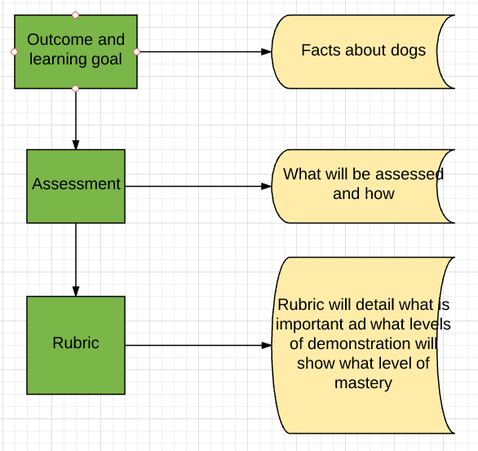
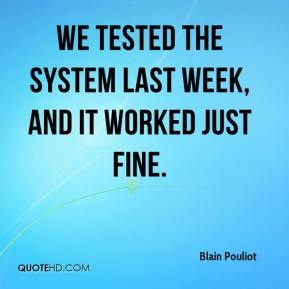
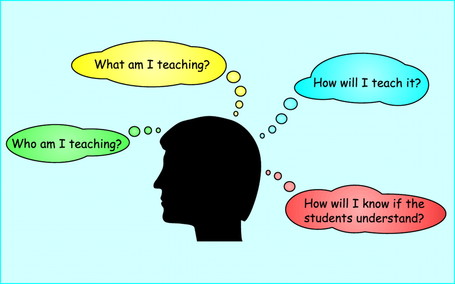

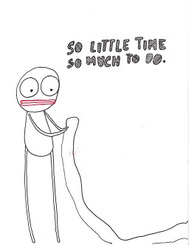


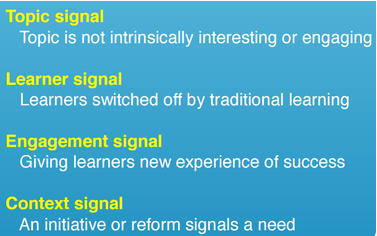
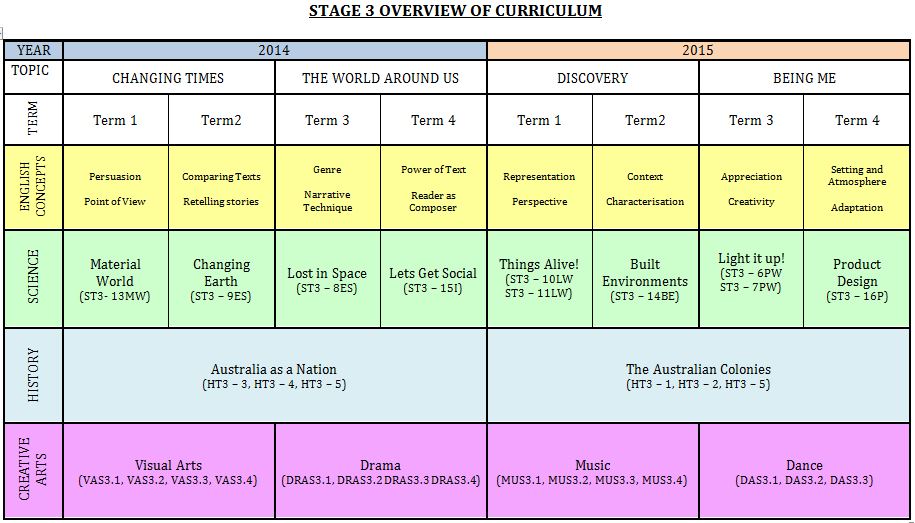
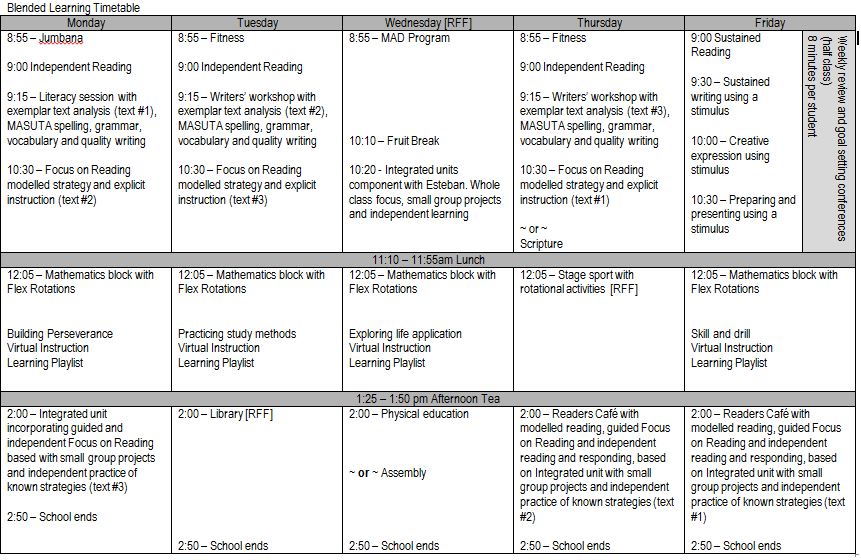
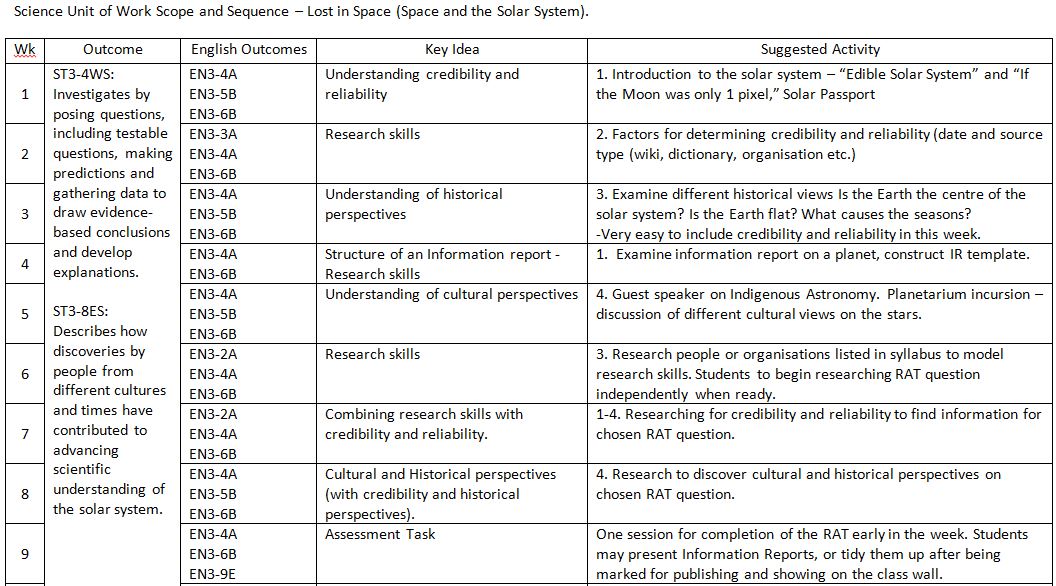
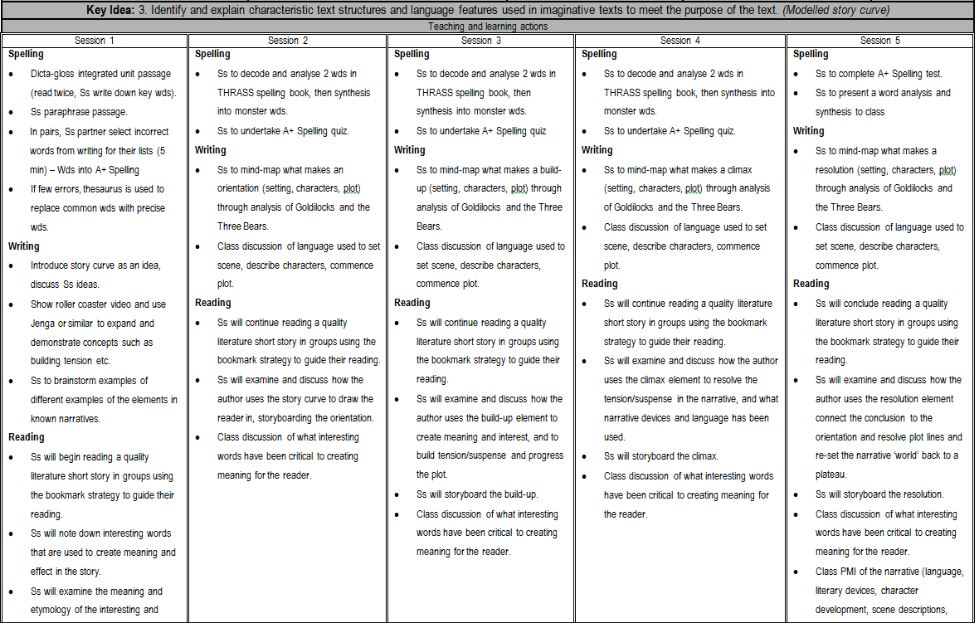
 RSS Feed
RSS Feed